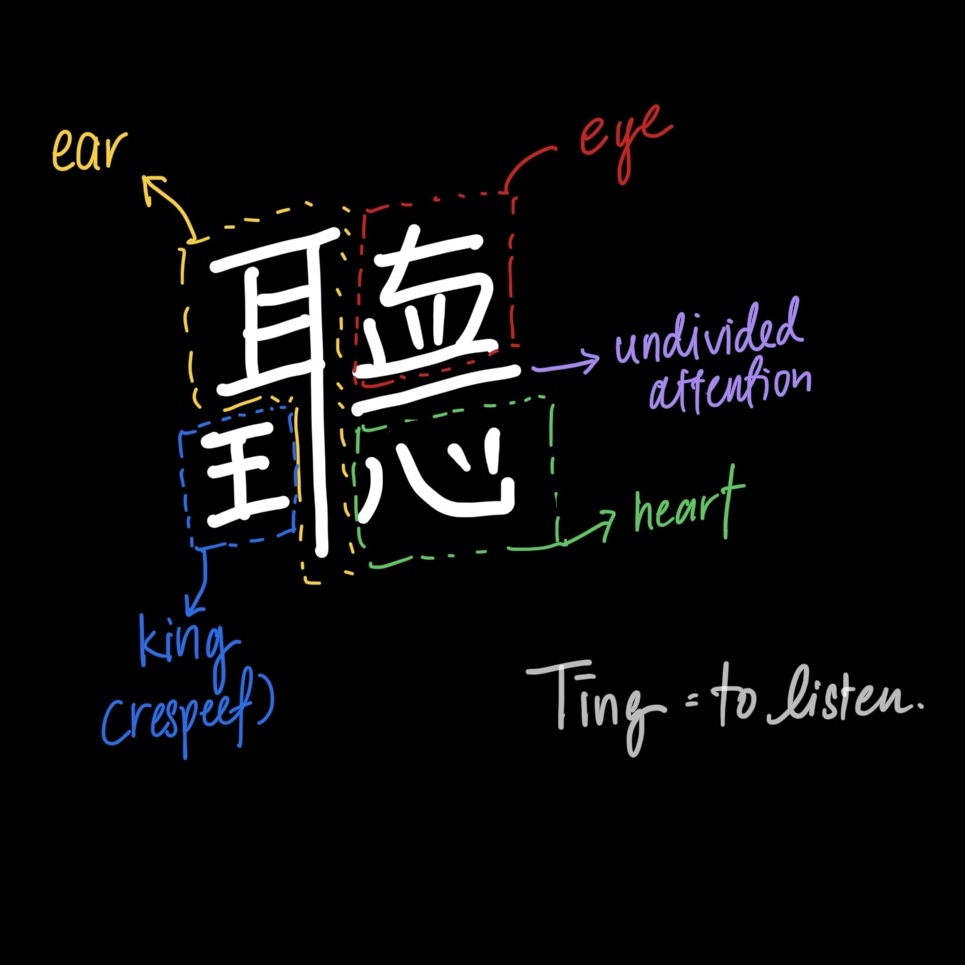The Art of Listening

By Kavena Sivapragasam
In a world overflowing with words, true listening has quietly become an endangered art.
We scroll, respond, and speak faster than we can feel. Yet beneath the surface of every
conversation lies a deeper need — the longing to be heard, not just answered. The
Chinese character 聽 (tīng), meaning “to listen,” offers a timeless reminder of what it
means to be fully present with another human being.
The character itself holds profound wisdom. It is composed of the ear (耳) — the gateway
through which sound enters; the eye (目) — to observe and perceive beyond words; the
heart (心) — to feel what the other feels; and a single line (一) — representing unity and
undivided attention. At its base lies 王 (king) — symbolising the dignity and respect with
which we ought to listen. Together, these elements remind us that listening is not a mere
act of hearing; it is an act of honouring — one that engages our senses, our empathy, and
our humanity.
Listening is the soil in which understanding grows. Yet in many spaces — workplaces,
relationships, classrooms, and even in our own minds — listening has been replaced by
reaction. We listen to reply, to defend, or to prove, rather than to receive. True listening
requires stillness — the kind that silences our inner dialogue long enough to let another
person’s truth unfold. It asks for humility, because to listen deeply is to admit that there is
something we do not yet know.
In the context of mental health, listening carries transformative power. So often, what a
person needs is not advice or solutions, but a witness to their inner world — someone who
can hold space for their story without interruption or judgment. When we listen this way, we
communicate safety. The nervous system relaxes. The heart begins to open. Words that
once trembled in silence finally find their way into the air.
Studies have shown that empathetic listening can regulate emotions, reduce anxiety, and
strengthen the bond between speaker and listener. But beyond the research, there is
something ineffable — a human truth that science can only partially capture: being heard
is a form of being seen. When someone truly listens to us, it validates our existence. It tells
us, “You are real. Your feelings matter. You belong.”
Listening is also an inward practice — one that nurtures our own mental well-being. We
often think of listening as something we do for others, but deep listening also connects us
to ourselves. To pause and listen to our own thoughts, our own emotions, is to create
space for clarity and self-compassion. It is in those quiet moments that we realise how
much of our restlessness comes not from the noise around us, but from the noise within.
Human connection, at its essence, is built upon this mutual listening. Every relationship —
between friends, colleagues, partners, families — grows in the presence of genuine
attention. When we listen with the ear, we hear words. When we listen with the eye, we
see expressions. When we listen with the heart, we sense meaning. And when all three
come together, we enter a state of presence that transcends dialogue — a moment where
two beings meet in shared humanity.
To practice the art of 聽 is therefore to practice love in its most silent form. It is to hold
another person’s story as sacred, without the urge to fix or label. It is to recognise that
every voice carries history, emotion, and longing. It is to offer stillness as a gift — a quiet
space where healing and connection naturally arise.
In a time when so many are speaking to be heard, perhaps what the world needs most are
more people willing to listen — not as an act of politeness, but as an act of care. For in the
gentle art of listening lies the power to soothe, to understand, and to remind us that
beneath all our differences, we are bound by the same desire: to be known, and to be met
with kindness.